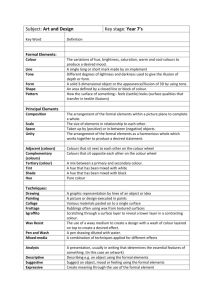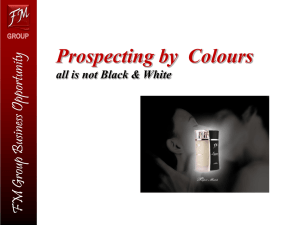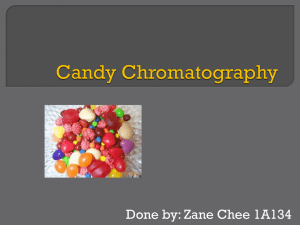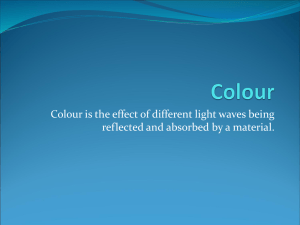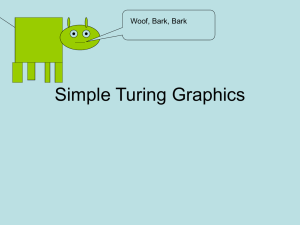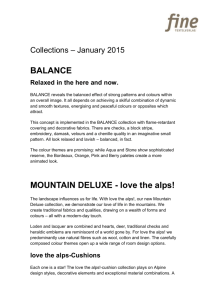Colour Theory of Light
advertisement
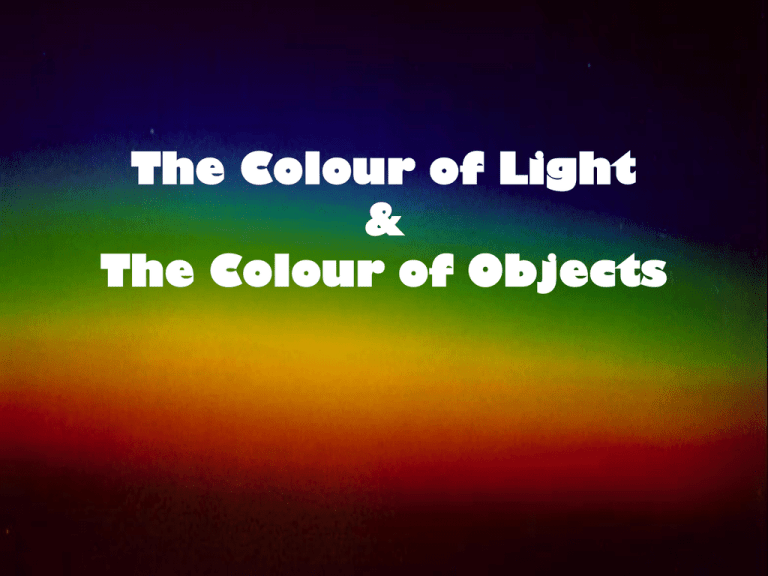
The Colour of Light & The Colour of Objects Colour by Addition • Sir Isaac Newton first discovered that visible (white) light was made up of many colours – ROY G BIV. • He could split visible light into its spectrum using a prism and then put it back together using a second prism. Additive Colour Theory Additive Colour Theory states… • You can mix red, green and blue light beams to make a white light beam. • Red, green and blue are the primary colours of light. You can’t make them by blending other colours but you can use them to make many other colours. • You can produce the secondary colours of light by mixing any two of the three primary colours. • Many visual technologies (like TV’s, iPods) make use of the additive colour theory. Secondary Colours • Red + Blue = Magenta • Red + Green = Yellow • Green + Blue = Cyan Complementary Colours • Complementary colours of light are any two colours that can be added together to make white light. • Each complementary pair is made of one primary colour and one secondary colour. • Complementary pairs: – Green & Magenta (G + (R + B)) – Blue & Yellow (B + (G + R)) – Red & Cyan (R + [B + G]) The Colour of Objects Colour by Subtraction • What determines the colours of the objects around you? • Objects can be opaque, translucent or transparent. – Opaque – solid and does not allow light to pass through it. – Translucent – allows some light through while scattering others. You can partially see through something that is translucent. – Transparent – allows all light to pass through it. Examples • Opaque • Translucent • Transparent Subtractive Colour Theory • When you see something, you actually are seeing the light that is reflected off of the object. • White light from the Sun, or a light bulb, is hitting every object – but not every object is white. Why? • Objects absorb some of the light that hits them and reflects some of that light as well. • It is the combinations of absorbed light and reflected light that gives the object its colour. Reflected Light How We See Colours http://www.youtube.com/watch?v=gtgBHsSzCPE&feature=related Human Vision • The human eye detects light and allows us to see. • The retina, found at the back of the eye, contains millions of specialized cells called rods and cones. • Rods are in charge of black and white vision. – When it gets dark outside – the rods take over. • Cones look after colour. There are three types – red, blue and green. The Eye Who absorbs all light except green light? You knew I’d be back!!!


